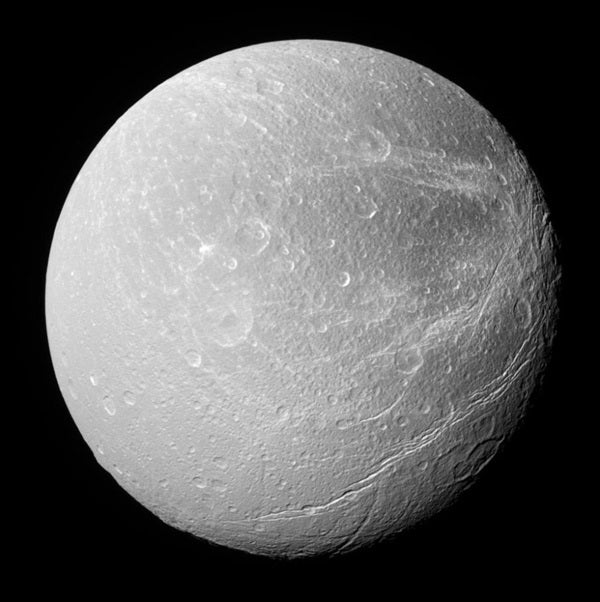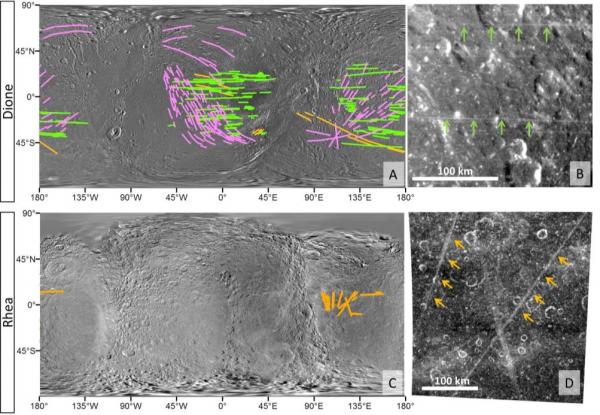After first noticing these stripes, researchers from the Planetary Science Institute and the Smithsonian began trying to figure out where they came from and why they exist.
Unusual Lines
They were able to rule out tectonic origins for the stripes — things like faults. Instead, the bright lines, or “linear virgae” as the researchers call them, were probably caused by material falling from the heavens, study author Emily Marten said in a press release. The stripes’ components could have come from Saturn’s rings, a close-passing comet, or co-orbital moons Helene and Polydeuces, which orbit Saturn along the same path as Dione.
To study the stripes, the pair looked at images taken by NASA’s Cassini spacecraft over the period of about a decade and compared them to other linear features observed in our solar system. Saturn’s moon Rhea has features that look somewhat similar, but their distribution is very different than on Dione. The lines on Dione are relatively parallel, but those on Rhea are more randomly oriented, the authors explain.
Based on their analysis of the Cassini data, the authors think that the stripes are likely “draped” across Dione’s surface like new-fallen snow — that is, the stripes lie on top of the moon’s surface features and don’t affect the underlying topography.
That means the material falling to Dione, wherever it’s coming from, is probably light and slow-moving enough to cover the surface without causing damage. The researchers have funding from NASA to continue their research with the Cassini data and find out whether or not whatever’s going on on Dione is occurring anywhere else in the Saturn system.
The study was published in the journal Geophysical Research Letters.











